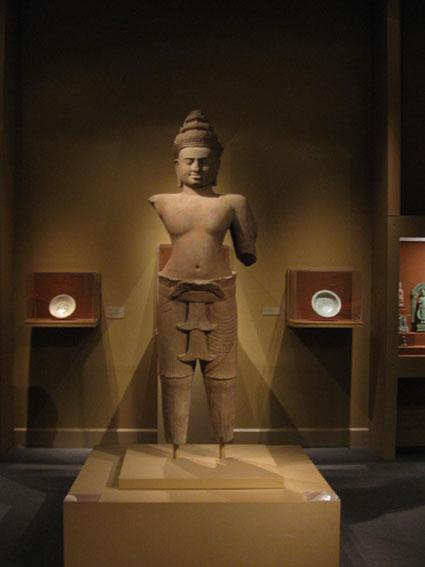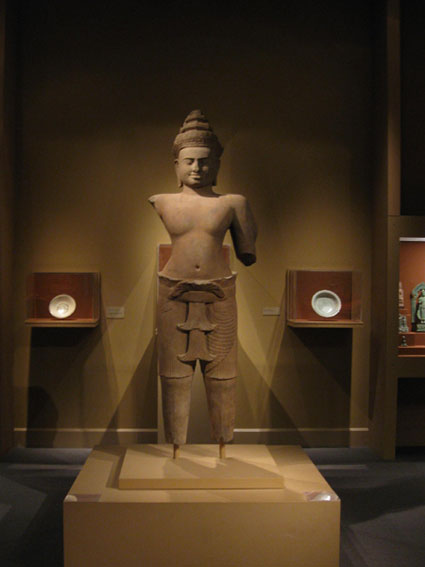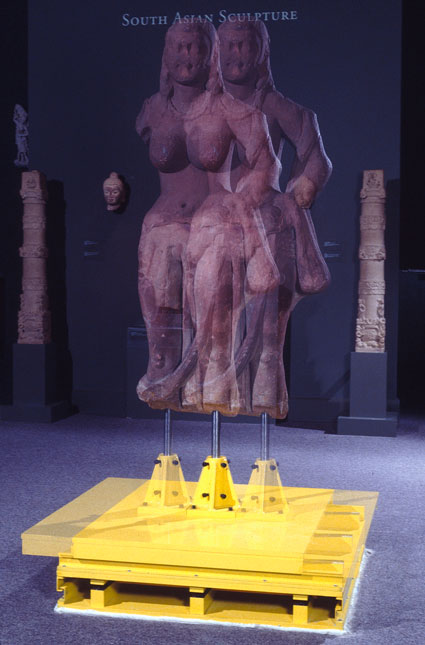Like a lot of people in L.A., especially in the last few weeks, I’ve had earthquakes on the brain. Is the big one on its way? Am I just asking to be crushed by my unreasonably large collection of books and records? Do I need to start wearing a helmet to work? If I’m in one of LACMA’s galleries during a quake, should I fear toppling art? I needed John Hirx, head of Objects Conservation, to set at least one of my fears to rest. John, I was told, is the man to talk to when it comes to earthquakes. For many years he has been working closely with engineers on isolator systems installed in the bases of sculptures to protect them from crashing to the floor during a major earthquake. There are a variety of mounts used for all kinds of sculptures around the museum, but the most sophisticated isolators are used for especially large freestanding sculptures. John estimates there are about five such isolators currently in use in the galleries. Two of them are in the South and Southeast Asian galleries on the fourth floor of the Ahmanson Building—the “worst-case-scenario” galleries in the museum, he tells me. Based on years of observation we know that this floor of the Ahmanson moves the most during earthquakes. In fact, during the Northridge earthquake in 1994, before the current isolators had been invented, the tenth-century Hindu God Vishnu, which stands more than seven feet tall, toppled from its mount, its head separating from its body. (Luckily, it should be noted, the statue was originally acquired in two parts; it broke in the exact spot where it had previously been separated.) In fact if you go into the gallery today you can still see a mark on the floor from the crash.
Today Vishnu stands in a new, safer location within the gallery, and on a new pedestal containing the most sophisticated isolator system thus far devised by anyone. Take a look at the base.
It doesn’t look like much from the outside, but inside that box are three massive steel plates stacked on top of each other on rails. And when I say massive, I mean massive: there are about three tons of steel inside that mount. These isolators act as a counterweight to the sculpture and absorb the movement of the quaking floor beneath. John illustrated this further by pointing to the top portion of the mount, which looks like a three-inch-high platform on top of the larger base. That platform actually moves, sliding from side to side atop the motionless base. In an earthquake the opposite would happen—the ground itself would be moving from side to side while the sculpture, thanks to the isolators, would remain still. Here’s a shot of a different sculpture atop a similar isolator, sans exterior base in order to illustrate the movement.
So that’s one fear I can happily suppress. Now about my books and records…






